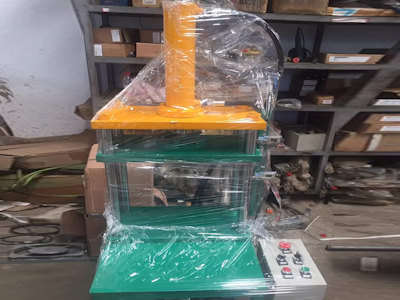В мире механики и инженерии пружины играют ключевую роль, обеспечивая работу countless устройств — от простых часов до сложных промышленных машин. Однако, даже самая качественная пружина может выйти из строя под воздействием времени, нагрузки и окружающей среды. Секрет их долголетия кроется не только в материале, но и в искусстве поверхностной обработки. Для мастера, стремящегося к совершенству, понимание этих методов — это не просто навык, а путь к созданию изделий, которые служат десятилетиями. В этой статье мы погрузимся в глубины технологий, раскроем все тонкости и предоставим практические рекомендации, которые преобразуют вашу работу.
Введение: Почему поверхностная обработка так важна?
Пружины, изготовленные из высокоуглеродистой стали или других сплавов, часто подвергаются коррозии, износу и усталости материала. Без должной защиты они теряют свою эластичность и прочность, что приводит к поломкам и дорогостоящему ремонту. Поверхностная обработка — это процесс нанесения защитных слоев или изменения поверхностных свойств для усиления durability. Это может включать покрытия, такие как цинкование или хромирование, термическую обработку, или механические методы, как shot peening. Для мастера, будь то любитель или профессионал, освоение этих techniques означает возможность создавать пружины, которые выдерживают экстремальные условия и служат верой и правдой.
Глава 1: Основные методы поверхностной обработки
Поверхностная обработка пружин encompasses a variety of methods, each with its own advantages. Let's explore the most common ones.
1.1 Гальваническое покрытие
Гальваника — один из самых popular methods, involving the electrochemical deposition of a metal layer, such as zinc or nickel, onto the spring surface. This provides excellent corrosion resistance. For instance, zinc coating (galvanization) creates a sacrificial layer that protects the underlying steel. Masters should ensure proper cleaning before coating to avoid adhesion issues. The process requires equipment like baths and power supplies, but it's accessible for small workshops with kits available online.
1.2 Термическая обработка
Heat treatment, including annealing, quenching, and tempering, alters the microstructure of the spring material to enhance hardness and fatigue resistance. For springs, tempering is crucial to relieve internal stresses induced during coiling. A master must control temperature and time precisely; typically, temperatures range from 300°C to 500°C for steel springs. This method is often combined with others for optimal results.
1.3 Механическая обработка: Shot Peening
Shot peening involves bombarding the spring surface with small shots (e.g., steel balls) to induce compressive stresses, which improve fatigue life by preventing crack propagation. This is highly effective for springs subjected to cyclic loading. Masters can use manual or automated peening machines; key parameters include shot size and intensity, which should be calibrated based on spring material and application.
1.4 Химические покрытия
Chemical coatings, such as phosphating or black oxide, provide a thin protective layer that enhances corrosion resistance and can improve paint adhesion. Phosphating, for example, creates a crystalline layer that bonds well with the metal. These methods are relatively simple and cost-effective, making them ideal for masters working on a budget.
Pro Tip: Always test a small sample spring with your chosen surface treatment before applying it to critical components to ensure compatibility and desired performance.
Глава 2: Выбор метода для различных типов пружин
Not all springs are created equal, and the choice of surface treatment depends on factors like material, application, and environment.
2.1 Пружины сжатия и растяжения
Compression and extension springs often benefit from shot peening due to high fatigue demands. Galvanizing is also common for corrosion protection in outdoor applications.
2.2 Крутильные пружины
Torsion springs, used in clothespins or garage doors, may require heat treatment to maintain torque consistency. Coatings like nickel plating can add wear resistance.
2.3 Пружины в агрессивных средах
For springs in marine or chemical environments, stainless steel with passivation (a chemical treatment) or specialized coatings like Teflon are recommended to prevent rapid degradation.
Глава 3: Практическое руководство для мастера
Implementing surface treatments requires careful planning and execution. Here's a step-by-step guide.
3.1 Подготовка поверхности
Start by thoroughly cleaning the spring to remove oils, dirt, and oxides. Use solvents like acetone or ultrasonic cleaners for best results. Any residue can compromise adhesion.
3.2 Нанесение покрытия
Follow manufacturer instructions for coatings. For galvanizing, immerse the spring in the bath for the specified time. For heat treatment, use a controlled oven and monitor with a thermometer.
3.3 Контроль качества
After treatment, inspect the spring for uniform coating, cracks, or deformities. Use magnifying glasses or microscopes. Test functionality under load if possible.
Safety First: Wear protective gear, such as gloves and goggles, when handling chemicals or heat sources to prevent injuries.
Глава 4: Передовые технологии и инновации
The field of surface treatment is evolving with new technologies like laser cladding or nano-coatings, which offer superior performance but may require specialized equipment. For masters, staying updated through online courses or industry journals can open doors to advanced applications.
Глава 5: Экономические аспекты и DIY подход
Surface treatments can be cost-effective if done in-house. Compare the costs of DIY methods versus outsourcing. For example, a home galvanizing kit might cost less than $100, while professional services charge per piece. Weigh the benefits against time and skill requirements.
Заключение: Превратите знания в мастерство
Поверхностная обработка — это мощный tool in a master's arsenal, transforming ordinary springs into durable, long-lasting components. By understanding and applying these methods, you can significantly extend the life of your creations, save money on replacements, and gain a competitive edge. Remember, practice makes perfect; start with simple projects and gradually tackle more complex treatments.
Key Takeaway: Invest time in learning surface treatments — it's an investment in quality and reliability that pays off for years to come.
For further reading, explore resources from organizations like ASM International or join online forums where masters share tips and experiences. Happy spring making!
 1388xx888xx
1388xx888xx




